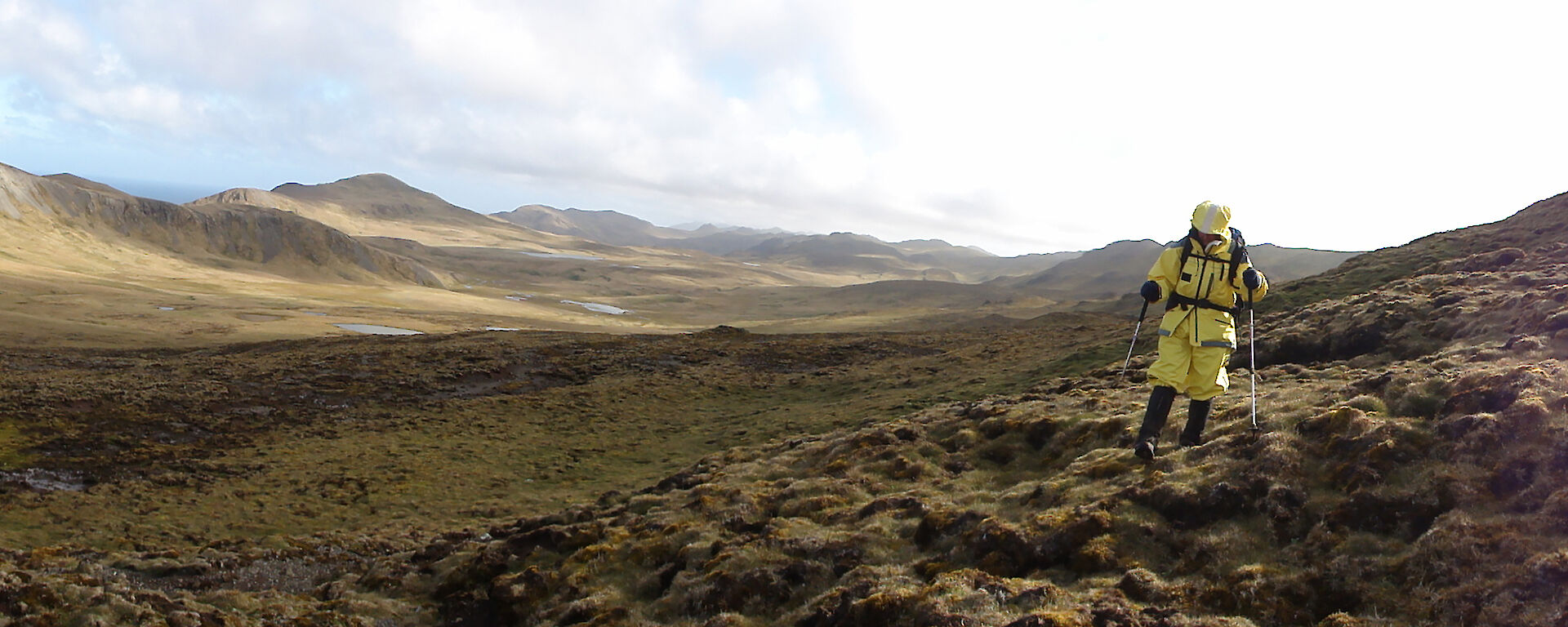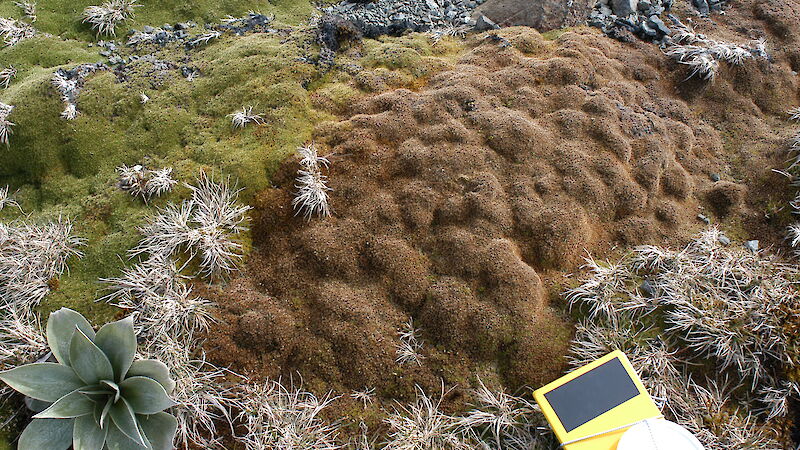Old growth cushion plants and mosses on subantarctic Macquarie Island are being decimated by recent climate change.
New research, published in the Journal of Applied Ecology in April, reveals the cushion plants, Azorella macquariensis, estimated to be hundreds of years old, are dying due to windier and drier conditions.
Lead author and ecologist with the Australian Antarctic Division, Dr Dana Bergstrom, said the dieback of the cushion plants and mosses is rapid, progressive and widespread across the island.
‘This is a plant that has survived for thousands of years, but it’s now struggling to cope with the rapid changes occurring on the island,’ Dr Bergstrom said.
‘Over the past four decades the environment has altered dramatically from wet and misty to one subject to periods of drying.’
The study, undertaken by 18 scientists from 10 institutions, looked at 115 sites across the Macquarie Island alpine tundra.
Between 2008 and 2013 the researchers found that in 88% of the study areas almost all the plants died, often leaving a desert-like landscape. The extent of the death of this keystone endemic cushion plant is so severe that it has been declared critically endangered. The primary cause of the species’ collapse is suspected to be the failure of cushion plants and mosses to withstand changes in summer water availability.
‘We found that for 17 years in a row there was not enough water available to the plants,’ Dr Bergstrom said.
‘Additionally, between 1967 and 2011, there has been uniform increases in sunshine hours, wind speed and water loss from the leaves of the plants and soil despite overall increases in precipitation from storm events.’
Australian Antarctic Division spatial ecologist, Dr Aleks Terauds, said the cushion plants and mosses are an important habitat for many other species on Macquarie Island.
‘The cushions act as a refuge for a whole range of spiders, mites and other plants, in what can be a very inhospitable environment,’ Dr Terauds said.
‘The dieback is essentially taking away that critical habitat and with annual growth of the plant rarely exceeding 5mm, it will be difficult for the species to recover.’
An insurance population of 54 irrigated plants has been set up on the island as a growth trial.
‘These plants are growing successfully in what is considered the best way to conserve the species until large quantities of seed can be harvested,’ Dr Bergstrom said.
‘This rapid ecosystem collapse on Macquarie Island is giving us a window into the potential impact of climate-induced environmental change on vulnerable ecosystems elsewhere.’
Nisha Harris
Australian Antarctic Division



